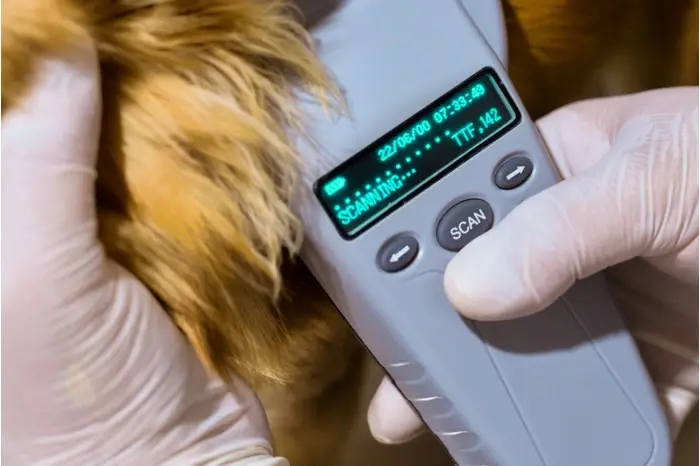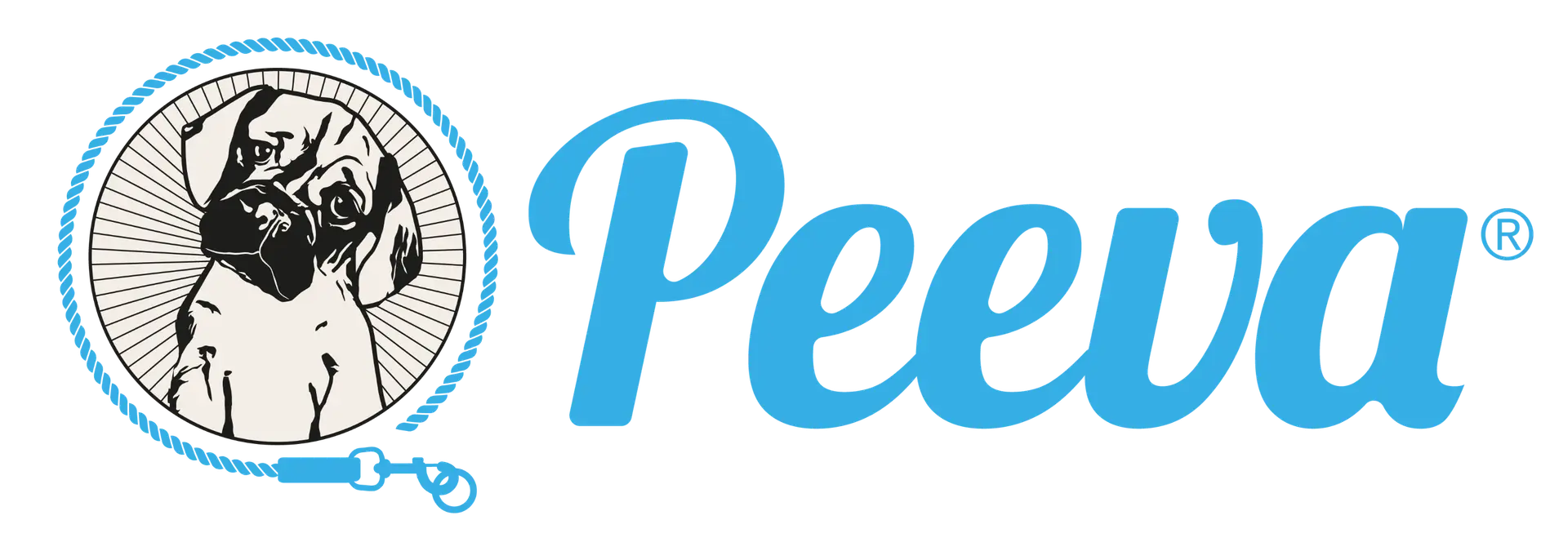Lost pets come home with Peeva.
The Essential Guide to Dog Microchip Scanners: Types and Uses
Losing a pet is painful. But thanks to microchipping, the chances of a happy reunion are vastly increased. This modern marvel, a blend of technology and love for our furry friends, isn’t just a chip; it’s a lifeline. At Peeva, we understand this connection deeply, dedicating our efforts to enhance pet security through advanced microchip technology.
Understanding Dog Microchips
Microchips in dogs aren’t just a trend; they’re a revolution in pet safety. The microchips are inserted under your dog’s skin, typically between the shoulder blades. This procedure is quick and relatively painless. But what does this tiny device do? It stores a unique identification number. When a scanner passes over it, the number is displayed, acting as a silent beacon of hope should your pet ever get lost.
The real magic of microchipping unfolds in the unfortunate event of a pet going missing. Imagine a stranger finds your wandering pup. A trip to a vet or shelter, where a microchip scanner is used, reveals your contact information linked to the chip, bridging the gap between lost and found. In a world where over 10 million pets are lost annually in the U.S. alone, a microchip can be the difference between a pet lost forever and a joyful reunion.
Moreover, microchips play a pivotal role in pet health. They can store vital medical information, making them indispensable in emergencies. Peeva takes this a step further by integrating microchip technology with a comprehensive pet recovery system, ensuring your pet’s safety is never compromised.
Dog Microchip Scanner: An Essential Tool
The unsung hero in this story of reunification and safety is the dog microchip scanner. This device is crucial in reading the information stored in a microchip. Without it, the microchip’s value diminishes significantly. A dog microchip scanner is a handheld device that, when waved over a pet’s body, detects the presence of a microchip and reads the unique identification number stored in it.
The primary use of these scanners is straightforward yet vital: to read the unique number on a dog’s microchip and use it to retrieve the owner’s contact information. This process is fundamental in pet recovery operations. Shelters, veterinarians, and even some public officials commonly use these scanners as part of their standard equipment, reflecting their indispensable role in pet care and safety.
The efficacy of a scanner hinges on its compatibility with the microchip’s frequency. Different microchip brands operate on different frequencies, and not all scanners can read all frequencies. This is where universal scanners, like those developed by Peeva, become invaluable. They are designed to read multiple frequencies, making them a versatile and essential tool for anyone involved in pet care and safety.
Types of Chip Scanners for Dogs
Navigating through the variety of chip scanners available can be as confusing as trying to find a lost pet in a large park. Let’s simplify this. Primarily, there are two types of scanners: handheld scanners and universal scanners.
Handheld scanners are the most common. Compact and easy to use, they are designed to read a microchip at close range. Their simplicity makes them a favourite among pet owners and shelters. However, their limitation lies in their compatibility with only specific frequencies, which can be a drawback if you encounter a chip of a different make.
Universal scanners, on the other hand, are the Swiss Army knives of chip scanners. These devices, like those Peeva develops, are designed to read multiple frequencies, making them compatible with virtually any microchip. This versatility is crucial in a landscape where numerous microchip brands exist. Universal scanners are a boon in emergency situations, ensuring no pet is left unidentified due to frequency mismatches.

How Dog Chip Readers Work
Understanding the functionality of dog chip readers can be as intriguing as understanding your pet’s quirky behaviours. These devices operate on a simple yet ingenious principle. When a scanner is passed over a microchip, it emits a low-frequency radio wave. This wave activates the microchip, which then transmits its unique identification number back to the scanner. This number, displayed on the scanner’s screen, is the key to accessing the pet’s registered information in a database.
This technology doesn’t require any battery or power source within the chip itself. The microchip remains dormant until activated by the scanner’s signal. This passive design ensures that the chip lasts for the lifetime of the pet without needing any maintenance.
Choosing the Right Microchip Scanner
When it comes to choosing the right microchip scanner, there are a few key considerations. First, compatibility is king. A scanner that can read various frequencies is preferable, particularly for professionals in pet care or rescue operations. Peeva’s universal scanners offer this flexibility, ensuring no chip goes unread.
The range and sensitivity of the scanner also matter. A good scanner can detect a chip from a few inches away, making the process less stressful for both the pet and the handler. Sensitivity is crucial, as some chips may have shifted from their original implantation site.
Another aspect to consider is durability and ease of use. A robust scanner that can withstand frequent use and is user-friendly is ideal for both professional and personal use. Lastly, while cost is a factor, it’s essential to weigh it against the benefits of a more reliable and versatile scanner.
Using a Dog Microchip Scanner Effectively
While using a dog microchip scanner is straightforward, there are best practices to ensure accurate readings. First, ensure the scanner is fully charged or has fresh batteries. Start by calmly approaching the dog, as a stressed animal can make scanning more challenging.
Begin scanning from the shoulder blades, moving the scanner in a slow, systematic manner over the dog’s body. Some chips may migrate, so it’s important to scan the entire body if the initial attempt doesn’t yield a result. The scanner should be held flat against the dog’s body and moved in a steady, overlapping pattern to ensure no area is missed.
Once the chip is detected, the scanner will display the unique identification number. Note this number and use it to retrieve the owner’s information from the relevant database. It’s important to remember that a microchip scanner is only as good as the information registered to the chip. Regularly updating contact details in the microchip database is crucial for a successful reunion.
Maintenance and Care for Your Dog Chip Reader
Taking care of your dog chip reader is essential for its longevity and reliability. Regular cleaning of the scanner, especially the scanning area, is crucial. Use a soft, dry cloth to gently wipe away any dirt or debris. Avoid using harsh chemicals or water, as these can damage the internal components.
For battery-operated scanners, check and replace the batteries regularly to ensure they are always ready for use. Store the scanner in a cool, dry place when not in use to prevent damage from extreme temperatures or moisture.
Periodically testing the scanner on a known microchipped pet can help ensure its accuracy and functionality. This routine check-up can be as routine as your pet’s regular health check.
Legal and Ethical Considerations
There are legal and ethical considerations to keep in mind when using dog chip readers. Firstly, respect the privacy of the pet and its owner. The information obtained from a microchip should be used solely for the purpose of reuniting the lost pet with its owner.
Be aware of local laws and regulations regarding microchipping and scanning. Some regions may require specific protocols or permissions to scan a pet’s microchip. Always operate within the legal framework of your area.
Remember, the microchip is not a tracking device and should not be treated as such. It is a means of identification and should be used ethically and responsibly.
Conclusion
Microchip scanners are indispensable tools in the quest to keep our furry friends safe. Understanding the different types of scanners, how they work, and how to maintain them ensures that we are equipped to help when a lost pet crosses our path. Always remember to update your pet’s microchip information and encourage others to do the same. With technologies like those offered by Peeva, reuniting lost pets with their families becomes more than a hope – it becomes a reality. So, take a moment to check your pet’s microchip today, and let’s keep our beloved companions safe and sound.
Peeva: Where Lost Pets Find Their Way Home
Transform your pet’s microchip into a lifeline. 24/7 phone support and lost pet alerts ensure your pet gets the help they need, when they need it.






